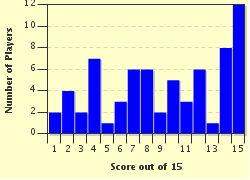Quiz Answer Key and Fun Facts
1. The founder of Hasidic Judaism was Polish Rabbi Israel ben Eliezer. He was commonly known as the "Ba'al Shem Tov" or by the acronym "Besht." What does "Ba'al Shem Tov" mean in English?
2. What was the name of the European Jews who opposed the rise and spread of Hasidism, literally meaning "opponents" in Hebrew ?
3. One of the major concepts of Hasidism is that a Jew should strive to cleave or attach oneself to God in all the affairs of life. This is commonly referred to as a "communion" between man and God. What is the term that is used to describe this concept?
4. Hasidism claims to prepare the world for the coming of the Jewish Messiah (Moshiach) through the spread of its four main goals. What are these four goals?
5. Hasidim can often be identified in the modern world through their distinctive style of dress. What is the name of the fur hat that many married Hasidic men wear on the Sabbath (Shabbat)?
6. Because of the Holocaust, all Hasidic sects had to relocate from Eastern Europe. Most Hasidic escapees and survivors eventually moved to North America or Israel and built new communities. What are Hasidic sects typically named after?
7. The Chabad-Lubavitch sect performs a number of outreach activities designed to encourage non-observant Jews to adopt some form of religious practice. What is the name given to the Lubavitcher emissaries that have been sent out across the world to do this outreach?
8. Satmar Hasidim are a very controversial group within the broad scope of Judaism and within the Hasidic world for their strong opposition to what political philosophy?
9. Most Hasidic men tend to wear long, uncut sideburns, referred to in English as sidelocks. What is the Yiddish term for these sidelocks?
10. Orthodox religious laws pertaining to the modesty of women require married women to cover their hair. Hasidic women tend to wear either a snood, tichel or sheitel in order to fulfill this obligation. What is a sheitel?
11. All Hasidic sects hold their leaders in great esteem. However, certain Chabad-Lubavitch adherents (known as Meshichists) proclaim that the movement's last leader will be the Messiah, even though he died in 1994. What is the name of this seventh and final Rebbe of the Chabad movement?
12. Many pre-Holocaust Eastern European Jews, including Hasidim, lived in shtetls. Shtetls were small towns with large Jewish populations, usually described as agricultural communities. The Satmar Hasidim have recreated a shtetl, of sorts, in Orange County, New York. What is the name of this village?
13. The reggae star, Matisyahu, grew up as a secular Jew and became a Hasidic Jew as an adult. What is the name given to a person, like Matisyahu, who start out life as secular or liberal Jews and fully adopt an Orthodox Jewish lifestyle later in life?
14. Hasidic Jews take the Torah's first commandment, to be fruitful and multiply, very seriously. What was the average number of children for Hasidic Jewish families in the United States according to the 2001 National Jewish Population Study?
15. Many Hasidic Jews in Israel and elsewhere refuse to use Hebrew as their everyday language, because to use Hebrew for anything other than religious speech would be profane. As such, Yiddish is used as the vernacular tongue for many Hasids, as it was in pre-Holocaust Europe. Yiddish is considered to be derived from what language (other than Hebrew and Aramaic)?
Source: Author
flip1701
This quiz was reviewed by FunTrivia editor
looney_tunes before going online.
Any errors found in FunTrivia content are routinely corrected through our feedback system.

